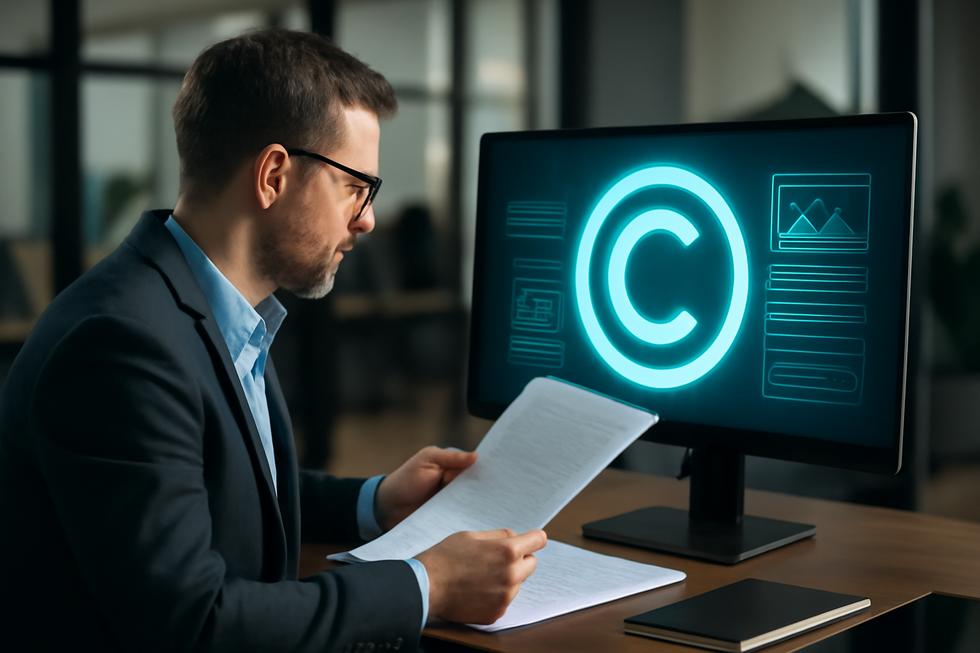Introduction
Copyright text serves as a crucial signal of ownership and control over original content, especially for business owners seeking to safeguard their creative assets. Understanding its structure and purpose lays the foundation for asserting rights and deterring unauthorized use. Beyond simply stating ownership, copyright text interacts with digital content licensing, enabling businesses to share or restrict usage effectively. This article explores the legal framework establishing automatic protection through copyright text, ensuring businesses know their rights from creation onward. It also delves into the implications of copyright notices for increasingly common practices like text and data mining, which often intersect with fair use and licensing limitations. Finally, the discussion addresses how contractual and legal nuances can affect the efficacy of copyright text, before providing practical recommendations on optimal usage and positioning of such notices. Together, these insights empower business owners to use copyright text as both a defensive and strategic tool in managing their intellectual property.
Tables of Contents
Chapter 1: Understanding the Structure and Purpose of Copyright Text
- Decoding the Essential Elements of Copyright Text: Legal Clarity and Ownership Assertion
- The Dual Role of Copyright Text: Legal Assertion and Clear Public Notice
- Decoding Ownership, Rights, and Transfer in Copyright Text Notices
- Defining the Reach of Copyright Text: What It Protects and Its Legal Boundaries
- Recognizing the Standard Format and Variations in Copyright Text Presentation
Chapter 2: Legal Framework Behind Copyright Text and Its Automatic Protection
- The Core Legal Requirements of Originality, Authorship, and Fixation in Copyright Protection
- The Fixation Requirement: Cementing Creative Works for Automatic Copyright Safeguards
- How Registration and Copyright Notice Fortify Automatic Protection in Copyright Law
- Navigating Digital Protections: How the DMCA Shapes Automatic Copyright Enforcement in the Digital Era
- Navigating Ownership, Transfers, and Enforcement Under Copyright’s Core Protections
Chapter 3: Clarifying Copyright Text: Its Legal Importance in Digital Licensing and Sharing
- Clarifying Legal Ownership and Licensing Permissions through Copyright Text
- How Copyright Text Shapes Licensing Agreements and Permission Structures in Digital Media
- Copyright Text as a Guiding Framework for Educators and Fair Use Compliance in Digital Licensing
- Safeguarding Creators’ Rights Through Copyright Text: Economic Control, Digital Use, and Moral Recognition
- How Copyright Text Clarifies Permissions to Enable Legal Sharing and Collaboration
Chapter 4: Implications of Copyright Text for Text and Data Mining Practices
- Navigating Legal Exceptions: How Copyright Text Shapes Text and Data Mining Rights
- How Contractual Terms Shape and Restrict Text and Data Mining Beyond Copyright Law
- Navigating Legal Divergence: Fair Use and Copyright Text Challenges in Text and Data Mining
- Navigating the Economic Stakes and Creative Integrity in Copyright Text’s Role on Text and Data Mining
- Balancing Legal Rights and Innovation: Technological and Societal Hurdles in Copyright Text for Text and Data Mining
Chapter 5: Contractual and Legal Nuances Affecting the Use of Copyright Text
- Foundations of Copyright Law: Balancing Creator Rights and Legal Contracts
- How Contractual Agreements Shape and Restrict the Legal Use of Copyright Text
- Mitigating Legal Risks and Infringement Challenges in the Use of Copyright Text
- Navigating the Complex Distinction Between Authorship and Ownership in Copyright Text Use
- Navigating AI Training and Copyright Text: Legal Complexities and Technological Boundaries
Chapter 6: Practical Recommendations for the Usage and Placement of Copyright Text
- Crafting Effective Copyright Notices: Content Essentials and Legal Impact
- Strategic Placement of Copyright Text Across Diverse Media for Clear Attribution
- Ensuring Effective Visibility and Consistency in Copyright Notices Across Media
- Maximizing Legal Protection and Visibility Through Strategic Copyright Notice Placement
- Strategic Copyright Text Use in Education: Enhancing Compliance and Respecting Licensing
Chapter 1: Understanding the Structure and Purpose of Copyright Text
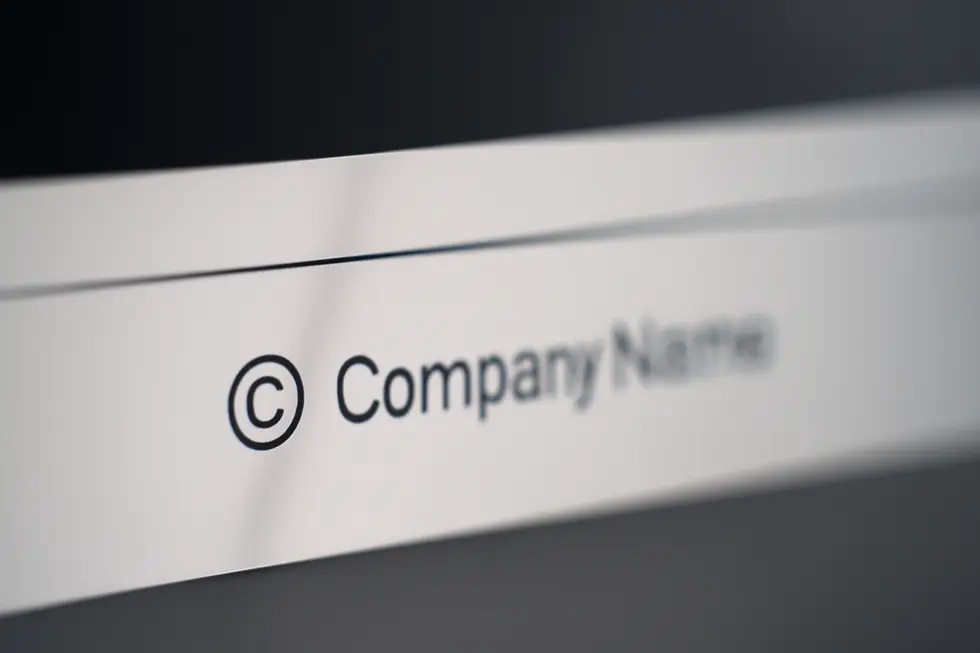
1. Decoding the Essential Elements of Copyright Text: Legal Clarity and Ownership Assertion
Copyright text is a carefully structured declaration that clearly identifies the copyright owner, the year of publication, and the scope of rights associated with a creative work. It typically begins with the © symbol or the word “Copyright,” followed by the publication year and the name of the copyright holder, for example, © 2025 John Doe. Additional elements may include legal phrases like “All rights reserved,” publisher details, edition information, and catalog numbers, especially in books. This text serves to affirm legal ownership, provide clear evidence in disputes, and inform readers about usage rights. Its standardized format supports both protection and public notice, ensuring creators’ rights are unmistakably asserted. For more details about copyright in publishing, see copyright information for books.
2. The Dual Role of Copyright Text: Legal Assertion and Clear Public Notice
Copyright text performs a crucial dual function: it asserts the legal foundation for protection and communicates ownership to the public. By displaying the © symbol, publication year(s), and rights holder’s name, the notice affirms that the creator holds exclusive rights granted under copyright law, such as reproduction and distribution. This visible marker discourages unauthorized use and strengthens legal claims by removing the defense of innocent infringement, potentially leading to greater damages if violations occur. Additionally, the notice guides users on proper permissions, reinforcing that the work is not free for public use without consent. Together, these elements uphold creators’ control while educating audiences on the work’s protected status. For deeper insights on how copyright notices support intellectual property, refer to this copyright information example for business. The U.S. Copyright Office also offers an authoritative overview of copyright notice principles and their practical impact.
3. Decoding Ownership, Rights, and Transfer in Copyright Text Notices
Copyright text succinctly communicates the ownership and exclusive rights tied to a creative work. It identifies the copyright holder—whether an individual or joint parties—and establishes control over the work’s use, including reproduction, distribution, and modification. These exclusive rights empower creators to determine how their work is exploited and licensed. Importantly, copyright can be transferred or licensed without handing over the physical work itself, allowing assignments, usage permissions, or inheritance to pass these rights to others. This legal clarity in copyright text ensures clear boundaries for usage and facilitates management among creators, collaborators, and successors, while marking the term of protection that eventually ends in public domain. For a deeper guide on structuring ownership and transfer in partnerships, see best practices for assigning IP ownership.
4. Defining the Reach of Copyright Text: What It Protects and Its Legal Boundaries
Copyright text denotes the legal protection granted to original creative works fixed in a tangible form. This protection covers diverse categories such as literature, visual arts, music, and audiovisual creations. It safeguards the expression of ideas rather than the ideas themselves, establishing exclusive rights for creators to reproduce, distribute, and adapt their works. However, these rights are not absolute; limitations include exceptions like fair use, restricted duration (commonly the author’s life plus 70 years), and non-protection of facts or methods. Including clear copyright text fosters awareness of ownership and helps balance creator benefits with public access to knowledge. For an extensive insight into copyright scope, visit Louis Fireison Law.
5. Recognizing the Standard Format and Variations in Copyright Text Presentation
Copyright text generally follows a recognizable format consisting of the copyright symbol © (or the word “Copyright”), the year(s) of first publication, and the copyright holder’s name. This combination clearly asserts ownership and the protection period. While this format is widespread for its clarity and legal weight, variations occur depending on the medium and creator intent. Some works include specific rights statements, licensing information, or permissions, especially in digital contexts where notices might be embedded as metadata or placed in footers and front matter. Additionally, semantic markup in digital publications enhances accessibility and clarity, organizing copyright notices systematically. These presentation choices underline the text’s dual role: legally safeguarding creative works and informing users, creating a clear record of rights without mandating a uniform global standard. For further guidance on structuring these texts in digital formats, see the EPUB Structural Semantics Vocabulary.
Chapter 2: Legal Framework Behind Copyright Text and Its Automatic Protection
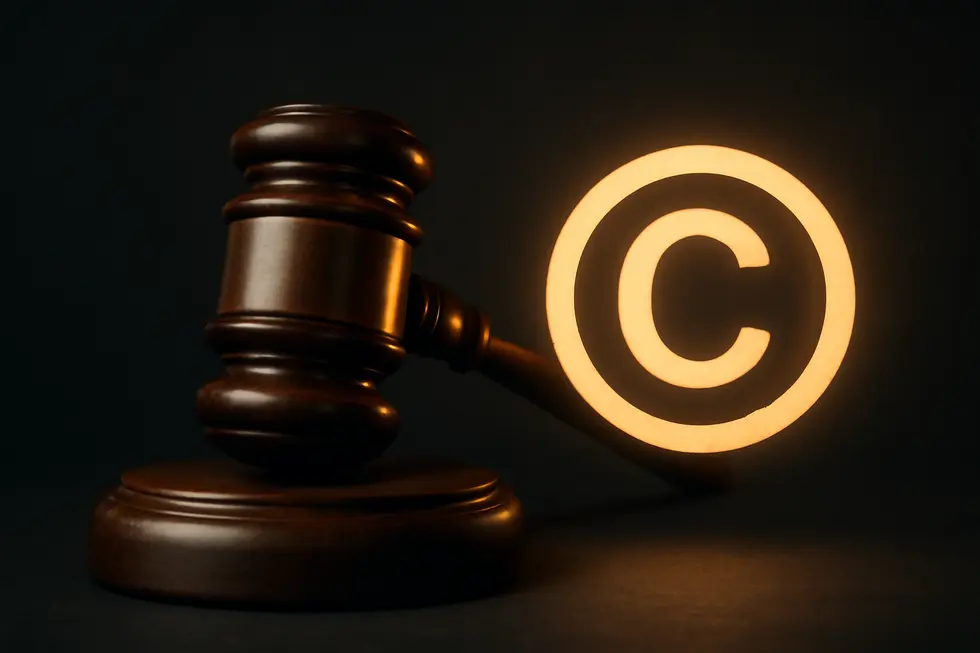
1. The Core Legal Requirements of Originality, Authorship, and Fixation in Copyright Protection
Copyright protection is grounded in three essential legal criteria: originality, authorship, and fixation. Originality requires that a work be independently created and exhibit at least minimal creativity, ensuring protection only for unique expressions rather than mere facts or ideas. Authorship mandates that the work stem from human creativity, excluding non-human-generated content. Fixation means the work must be embodied in a tangible medium, able to be perceived or reproduced beyond a fleeting moment—such as a written text or recorded speech. Once these elements are met, copyright protection begins automatically, granting exclusive rights without formal registration. This framework precisely protects creative expression while upholding legal clarity for rights holders. For deeper insight, consult the University of Michigan’s Copyright Basics guide.
2. The Fixation Requirement: Cementing Creative Works for Automatic Copyright Safeguards
The fixation requirement forms the legal cornerstone that transforms intangible ideas into protected copyrighted works. For copyright to arise automatically, a work must be fixed in a tangible medium—such as written text, digital files, or recorded audio—ensuring it can be perceived or reproduced over time. This fixation anchors the author’s exclusive rights, granting control over reproduction, distribution, and derivative creations without needing formal registration. By establishing this threshold, copyright law safeguards the expression rather than the mere idea, incentivizing creators through immediate protection upon stabilization. Examples include saved digital documents or uploaded photographs, which become protected as soon as they are fixed. Understanding fixation clarifies how copyright text signals ownership and legal protection in practical terms. For more insights on copyright definitions and economic impact, see copyright definition economics business.
3. How Registration and Copyright Notice Fortify Automatic Protection in Copyright Law
Copyright protection begins automatically once an original work is fixed in a tangible form, granting creators immediate exclusive rights without needing formal registration or notice. However, copyright registration plays a crucial role by formally documenting ownership, which simplifies proving authorship during disputes and unlocks access to statutory damages and attorney fees if litigation arises. In some jurisdictions like the United States, registration is a prerequisite to suing for infringement. Meanwhile, the copyright notice, featuring the © symbol, author’s name, and year, serves as a visible deterrent against unauthorized use and supports evidentiary claims about a work’s creation date. Together, these elements complement the automatic protection system—ensuring creators not only gain rights at creation but also benefit from strengthened enforceability and clearer public awareness. This synergy sustains an effective legal framework balancing creators’ interests with public access. For further insight into intricacies of copyright law that influence business, see copyright definition for business owners.
Source: Dennemeyer IP Blog on Copyright Definition & Registration
4. Navigating Digital Protections: How the DMCA Shapes Automatic Copyright Enforcement in the Digital Era
The Digital Millennium Copyright Act (DMCA) fundamentally adapts copyright law for digital creations, reinforcing the automatic protection granted upon creation of original works. Enacted in 1998, it balances creators’ rights with the evolving internet landscape by introducing safe harbor provisions that shield ISPs from liability if they promptly remove infringing content upon notification. This notice-and-takedown system empowers copyright holders while encouraging service providers to cooperate without fear of undue punishment. Additionally, the DMCA prohibits circumvention of digital rights management (DRM) tools, extending copyright enforcement to technological protections. By integrating these measures, the DMCA preserves copyright protections in digital environments and supports innovation online. For further guidance on copyright concepts relevant to creators, see copyright language for business owners. Detailed legal interpretations can be found at the U.S. Copyright Office.
5. Navigating Ownership, Transfers, and Enforcement Under Copyright’s Core Protections
Navigating Ownership, Transfers, and Enforcement Under Copyright’s Core Protections
Copyright protection attaches automatically once a text work is fixed in a tangible form, granting the creator exclusive rights without formal registration. Ownership initially belongs to the author, with the ability to transfer or license rights through contracts, which often clarify the scope of derivative works and enforcement responsibilities. Notably, authors and heirs possess statutory termination rights to reclaim transferred copyrights within specific periods. Enforcement includes legal remedies such as damages and injunctions, supported by registration which enhances the ability to litigate. Licensing agreements play a central role in defining permitted uses and handling infringement. International treaties like the Berne Convention extend protection globally, though enforcement varies by jurisdiction. Emerging concerns with NFTs and AI-generated content introduce new complexities around ownership and enforceability that the legal framework continues to address.
For deeper insight into practical copyright issues in business, see copyright language for business owners.
External Reference: Termination of transfer rights in U.S. Copyright Law (17 U.S.C. §§ 203 and 304).
Chapter 3: Clarifying Copyright Text: Its Legal Importance in Digital Licensing and Sharing
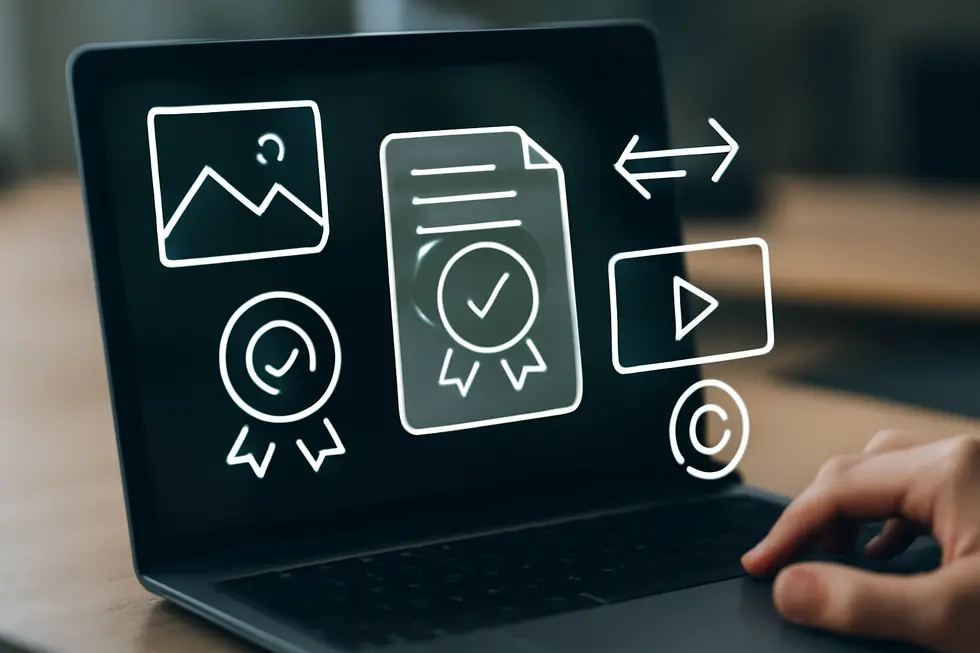
1. Clarifying Legal Ownership and Licensing Permissions through Copyright Text
Copyright text serves as a clear declaration of legal ownership, granting creators exclusive rights to reproduce, distribute, and modify their digital works. By pairing this notice with licenses, such as Creative Commons, it precisely outlines the permissions and restrictions for use, enabling lawful sharing and reuse under defined terms like attribution or non-commercial use. This transparency helps creators protect their rights against infringement, while guiding users on their obligations to respect those rights. In digital environments, where content is easily copied, copyright text fortifies enforcement frameworks and supports exceptions like fair use. Properly utilized, it forms the backbone of responsible digital content management and licensing. For more on copyright licenses, see the University of Pittsburgh’s guide on copyright licenses.
2. How Copyright Text Shapes Licensing Agreements and Permission Structures in Digital Media
Copyright text serves as a vital indicator of ownership and usage terms, directly influencing the licensing agreements and permission structures that regulate digital content sharing. Licensing agreements formalize how digital works may be reused, redistributed, or adapted while preserving the creator’s rights. These contracts range from open licenses, like Creative Commons, which allow specified freedoms including attribution, to more restrictive arrangements that limit commercial use or derivative creations. Permission structures complement licenses by requiring explicit authorization for uses beyond fair use, often facilitated through written requests or collective licensing bodies. In digital environments, these frameworks also address complex scenarios such as text and data mining, where license terms may override default legal exceptions. Content licensing agreements ensure clarity in rights and obligations, balancing creators’ control with users’ access. For a deeper understanding of licensing frameworks in copyrighted works, explore this detailed content licensing agreement guide.
3. Copyright Text as a Guiding Framework for Educators and Fair Use Compliance in Digital Licensing
Copyright text serves as a critical guide in digital content licensing, especially within educational and fair use frameworks. By clearly stating ownership and permissible uses through explicit licensing—such as Creative Commons or commercial terms—it delineates the boundaries for lawful reproduction and sharing. In educational settings, this clarity empowers instructors to rely on fair use and the TEACH Act without repeatedly seeking permissions, provided they consider factors like purpose, amount, and market impact. Furthermore, well-placed copyright notices support compliance with the Digital Millennium Copyright Act (DMCA), balancing creators’ rights and fair user claims. This fosters ethical intellectual property respect while enabling lawful reuse aligned with educational objectives. For more on licensing clarity, see copyright language for business owners.
Helpful external guidance on licensing compliance in education can be found at Pitt Libraries.
4. Safeguarding Creators’ Rights Through Copyright Text: Economic Control, Digital Use, and Moral Recognition
Copyright text plays a crucial role in defining how digital content can be used, shared, and monetized, offering clear protection for creators’ economic, digital, and moral rights. It establishes the scope of permissible use, enabling creators to retain control over reproduction and distribution while specifying conditions that preserve their reputation through attribution and protection against derogatory alterations. Licensing frameworks like Creative Commons provide standardized ways to communicate these rights, balancing open sharing with necessary restrictions. In the digital economy, where content spreads easily, clear copyright notices help prevent infringement and support ethical reuse. This legal clarity fosters trust and ensures creators can benefit financially and socially from their work. For more insight into business-related copyright protections, see copyright distribution rights for business. External guidance on managing infringement risks in digital content is available at PatentPC.
5. How Copyright Text Clarifies Permissions to Enable Legal Sharing and Collaboration
Copyright text is a vital tool for clearly conveying legal permissions and restrictions in digital content. By displaying copyright notices alongside licenses like Creative Commons, it informs users of what they may legally do—such as reusing, modifying, or redistributing content—while protecting creators’ rights. This clarity reduces infringement risks and encourages collaboration across platforms, especially in educational and research settings where licensing agreements govern lawful use. Additionally, copyright text supports compliance in specialized uses like text and data mining by outlining contractual conditions. Such transparency fosters a cooperative digital environment where creators and users can share and build upon works responsibly. For further insights, see licenses and copyright.
Chapter 4: Implications of Copyright Text for Text and Data Mining Practices
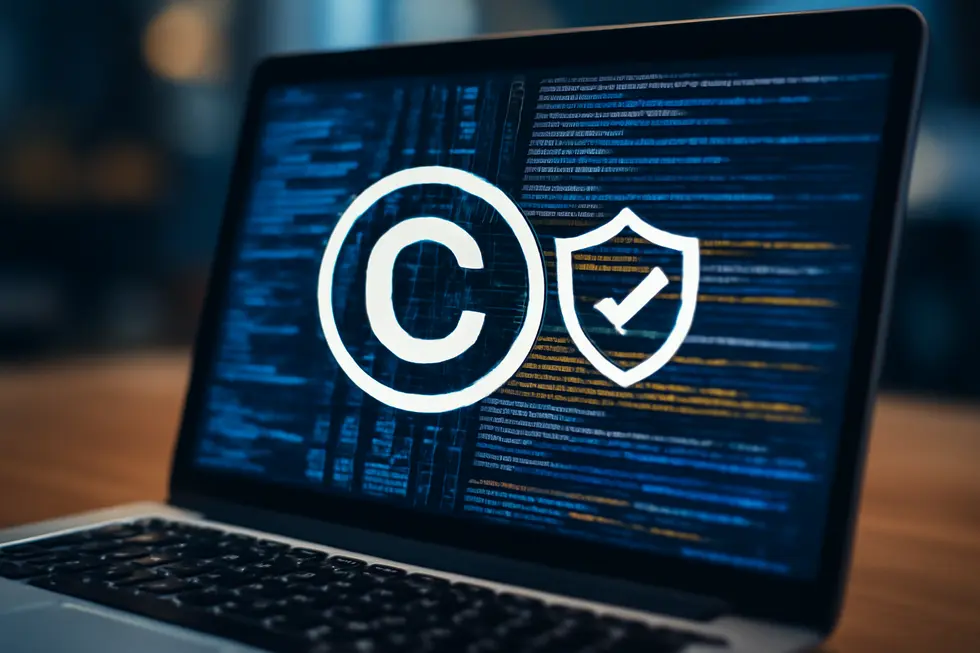
1. Navigating Legal Exceptions: How Copyright Text Shapes Text and Data Mining Rights
Copyright exceptions for text and data mining (TDM) provide essential legal clearance for researchers to copy and analyze copyrighted works, predominantly for non-commercial purposes. Jurisdictions like the UK explicitly protect TDM under the law, allowing full copying regardless of contractual restrictions, which supports broad academic inquiry. In contrast, the U.S. relies on the flexible fair use doctrine, which can be complicated by licensing agreements or website terms that may restrict mining activities. Internationally, debates continue over introducing clear statutory TDM exceptions to balance innovation with creators’ rights, especially amid AI advancements. These exceptions facilitate access to large datasets without prior permission, significantly easing research. However, limitations imposed by contracts remain a challenge, underscoring a nuanced interplay between copyright law, contractual terms, and cultural impact. For deeper insight into how copyright frameworks influence data practices, explore this detailed copyright information example for business.
UK Intellectual Property Office (IPO) guidance on TDM exceptions
2. How Contractual Terms Shape and Restrict Text and Data Mining Beyond Copyright Law
While copyright law offers exceptions that can permit text and data mining (TDM) for research, these allowances are frequently limited by binding contractual agreements. Licenses and website terms of use often impose stricter controls, forbidding activities like data scraping or content mining even where copyright exceptions apply. This creates a legal grey area that can impede research and AI development, as ignoring such contracts risks civil liability. Publishers frequently include explicit prohibitions against TDM in their terms, shaping how copyrighted content may be used beyond statutory permissions. Consequently, compliance with both copyright text and contractual conditions is essential for lawful TDM practice, underscoring a complex interplay between legal rights and contractually agreed restrictions. For researchers seeking clarity on this balance, resources such as the University of Derby’s guide on text and data mining provide valuable insights. This dynamic highlights how copyright notices and related contract terms must be carefully navigated to responsibly access and utilize protected works.
3. Navigating Legal Divergence: Fair Use and Copyright Text Challenges in Text and Data Mining
Jurisdictional disparities deeply influence how copyright text interacts with text and data mining (TDM) practices. While regions like the EU and UK incorporate specific TDM exceptions allowing automated analysis for research, countries such as Thailand enforce strict copyright laws without fair use allowances, intensifying licensing needs. The U.S. presents a mixed landscape, with courts varying on whether AI training on copyrighted materials qualifies as fair use, amplifying legal complexities. The EU’s Directive (EU) 2019/790 supports opt-out TDM exceptions but faces criticism for inadequately addressing generative AI’s rise, prompting proposals for opt-in models to better safeguard rights and compensation. These differences impose notable risks and licensing demands on AI developers worldwide, impacting innovation and necessitating vigilant legal management amid evolving policies and ongoing litigation. For a foundational understanding, explore detailed insights on copyright language for business owners. For further reading on jurisdictional developments, the summary by Stanford Law provides a comprehensive overview.[2]
4. Navigating the Economic Stakes and Creative Integrity in Copyright Text’s Role on Text and Data Mining
The presence of copyright text carries significant weight in shaping the economic landscape and creative vitality surrounding text and data mining (TDM). While copyright protections safeguard creators’ exclusive rights, they also complicate access to vast content reservoirs crucial for AI and data-driven innovation. Proposals for statutory exceptions aim to open these gates, potentially accelerating technological progress and productivity. Yet, such exceptions risk diminishing creators’ control, revenue, and cultural recognition, especially within diverse or Indigenous communities. Market dynamics can be skewed, favoring large AI firms with extensive data pools, which may threaten smaller creative sectors. Effective policy must delicately balance fostering innovation with protecting economic interests and moral rights. Mechanisms like licensing marketplaces and advanced rights management can support fair remuneration and ethical use, enabling TDM to flourish without compromising the artistic ecosystem’s sustainability. For an in-depth discussion on economic aspects of copyright in business, see copyright definition economics business. A comprehensive analysis of TDM exceptions and their creative industry impacts is available at the Productivity Commission’s report and article: https://lsj.com.au/articles/what-would-a-text-and-data-mining-copyright-exception-mean-for-the-arts/
5. Balancing Legal Rights and Innovation: Technological and Societal Hurdles in Copyright Text for Text and Data Mining
Text and data mining (TDM) navigates a complex landscape where copyright text poses both technological and societal challenges. Automated TDM techniques exploit large copyrighted datasets for insights, but legal exceptions often clash with restrictive contracts and technical barriers like access controls. These hurdles complicate compliance and access, especially when licensing terms override copyright exceptions. Societally, ethical concerns arise around consent, fair compensation, and transparency in AI training, as generative models commonly incorporate copyrighted works without explicit permission. The global inconsistency of copyright exceptions and ambiguous fair use doctrines further amplify uncertainty for researchers. Addressing these intertwined issues demands harmonized legal reforms, clear licensing frameworks, and ethical guidelines to ensure innovation does not erode creators’ rights. For deeper insight, refer to the University of Derby’s copyright guide on text and data mining.
Chapter 5: Contractual and Legal Nuances Affecting the Use of Copyright Text
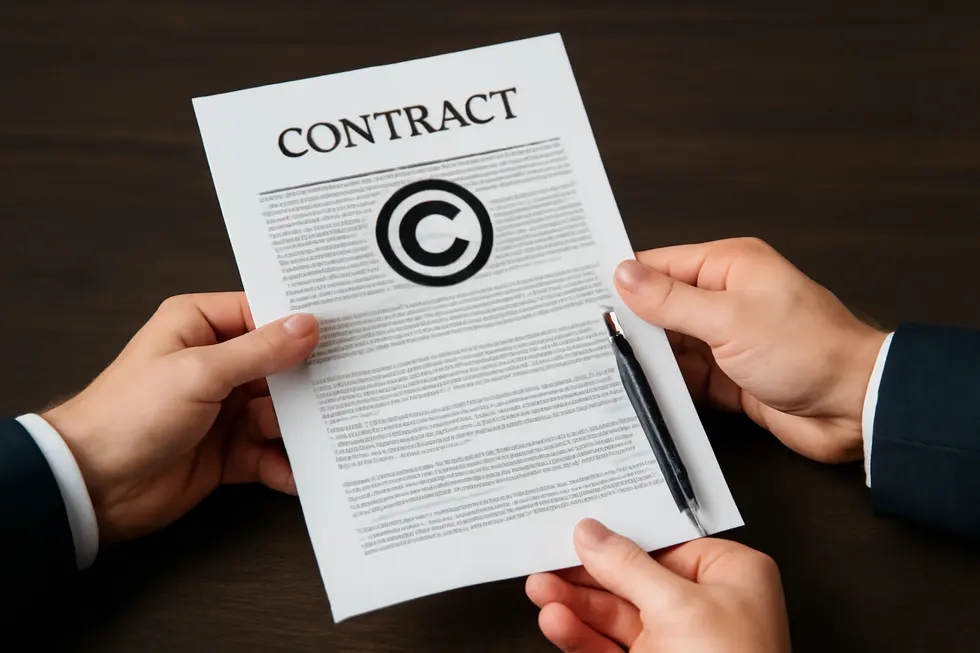
1. Foundations of Copyright Law: Balancing Creator Rights and Legal Contracts
Copyright law grants creators exclusive rights to protect their original works from unauthorized use, applying automatically when a work is fixed in a tangible form. These rights cover reproduction, distribution, and adaptation, but do not extend to underlying ideas, facts, or common elements, which remain free for public use. Legal distinctions between authorship and ownership arise often in contracts, where rights may be assigned or licensed without forfeiting statutory protections. Moreover, fair use or fair dealing allow limited uses under specific conditions, though these exceptions vary by jurisdiction. Contracts can supplement but not override core legal principles, ensuring a delicate balance between creator control and lawful access. For deeper insight, consider exploring detailed explanations of copyright contracts.
2. How Contractual Agreements Shape and Restrict the Legal Use of Copyright Text
Contractual agreements frequently define the real boundaries of using copyrighted text, often imposing constraints beyond copyright law’s provisions. These contracts, including licenses and terms of service, can limit or forbid activities such as text and data mining, even if copyright exceptions like fair use would otherwise permit them. Such agreements may also clarify ownership and usage rights, essential in avoiding disputes where default laws may not reflect parties’ expectations. However, copying generic contractual terms without customization risks ineffective protection and legal challenges. Understanding these nuanced agreements helps navigate the practical legal landscape of copyright compliance more securely. For further insights on contractual considerations, see copyright as a contract.
3. Mitigating Legal Risks and Infringement Challenges in the Use of Copyright Text
Using copyright text without proper authorization entails significant legal risks, including statutory damages, injunctions, and even criminal penalties. Unlike plagiarism, which is an ethical issue, copyright infringement legally violates the rights of the copyright holder. Contractual terms often define permitted uses; ignoring these can lead to breach of contract and further liabilities. Digital content multiplies risks as unauthorized copying or modification may still infringe underlying rights. Beyond legal penalties, infringement harms reputations and business relationships, intensifying consequences. Navigating the complexities of fair use and licenses requires careful attention to avoid costly claims. Understanding these nuances and respecting contractual limits is essential for lawful use. For more details on legal protections, consider exploring copyright distribution rights.
4. Navigating the Complex Distinction Between Authorship and Ownership in Copyright Text Use
Authorship and ownership are distinct but intertwined concepts crucial to understanding copyright text usage. Authorship refers to the creator of the original work, inherently tied to the act of creation and moral rights such as attribution and the integrity of the work. Ownership, however, is a legal status defining who holds the exclusive rights to use, reproduce, and distribute the copyrighted text. Often, ownership can transfer through contracts, such as “work made for hire” agreements where employers, not creators, become owners. This distinction affects licensing, derivative works, and joint authorship scenarios, where shared ownership demands coordinated consent for exploitation. Recognizing these nuances guides correct legal use and protection of copyrighted material. For more insights on contractual copyright considerations, see copyright as a contract.
External reference: Bytescare – Authorship vs Ownership in Copyright Law
5. Navigating AI Training and Copyright Text: Legal Complexities and Technological Boundaries
The intersection of AI training and copyright text presents complex legal and contractual challenges that vary globally. In the U.S., landmark rulings like Bartz v. Anthropic have recognized AI training on lawfully acquired copyrighted works as potentially fair use, emphasizing the transformative nature of such applications and a minimal market impact. Conversely, the European Union’s AI Act introduces stricter controls, requiring explicit authorization and embracing exceptions mostly for research, while also enforcing transparency and opt-out rights for copyright holders. Beyond training data, copyright law grapples with AI-generated outputs, generally denying protection to fully autonomous creations lacking human input. Technologically, AI aids copyright compliance by automating licensing checks and infringement detection, reflecting its dual role in creation and enforcement. These evolving frameworks compel careful contractual consideration to balance innovation with respecting copyright holders’ rights. For a deeper overview, see the analysis of U.S. copyright law and licensing terms for business.
External Resource: Analysis of the U.S. federal court ruling Bartz v. Anthropic (2025) on AI training and fair use.
Chapter 6: Practical Recommendations for the Usage and Placement of Copyright Text

1. Crafting Effective Copyright Notices: Content Essentials and Legal Impact
Copyright notices typically include three key elements: the copyright symbol ©, the year(s) of first and last publication, and the name of the copyright holder. This concise combination signals that the work is protected and identifies ownership, supporting the legal assertion of rights. While not mandatory under copyright law, a clear and consistently placed notice—such as in website footers, ebook title pages, or video credits—serves as an important deterrent against infringement. It clarifies ownership, discourages unauthorized use, and prevents claims of innocent infringement. Updating the year for new editions and maintaining straightforward wording improves clarity and user understanding. Including contact information or licensing terms can further streamline permissions. For more insights on copyright usage in various contexts, see copyright information example for business. For official guidance on notice content and legal benefits, consult authoritative sources like the LegalKart guide on copyright disclaimers.
2. Strategic Placement of Copyright Text Across Diverse Media for Clear Attribution
Effective placement of copyright text adapts to the media type while ensuring legal clarity and respectful presentation. For images and visual media, the notice should appear visibly near the bottom corner without obscuring content, or on dedicated description pages when hosted on platforms like Wikimedia Commons, using standardized license templates. In textual works such as articles or publications, copyright text commonly appears on the title page, footer, or within captions, respecting citation styles like APA and including relevant license and permission details. Audio and video media benefit from embedding copyright information both visually—in credits—and within metadata to maintain persistent attribution regardless of playback. Balancing visibility with subtlety, adhering to platform requirements, and following exact license terms fortify copyright protection while preserving user experience. For further insight, consult this detailed guide on copyright text usage for business owners.
3. Ensuring Effective Visibility and Consistency in Copyright Notices Across Media
Practical use and placement of copyright text hinge on three essential principles: visibility, clarity, and consistency. The notice should include the © symbol or the word “Copyright,” the year of first publication, and the copyright holder’s full name, maintaining a straightforward style to avoid confusion. Regular updating of the yearReflect changes in content over time, enhancing legal precision. Placement varies by medium—footers on websites, end of posts for blogs, title or verso pages for books, video credits, or embedded image metadata—ensuring the notice is noticeable without detracting from content. Across all platforms, a uniform style reinforces the copyright’s legal authority and promotes clear communication. Including clear contact details or licensing terms further supports rights management. These practices build strong protection through clear, consistent visibility. For in-depth guidance on drafting and positioning copyright text, visit this valuable resource on writing and placing copyright disclaimers.
4. Maximizing Legal Protection and Visibility Through Strategic Copyright Notice Placement
Proper placement of copyright text is a crucial strategy that enhances legal protection and visibly asserts ownership. Incorporating the © symbol, publication year(s), and copyright holder’s name in conspicuous locations—such as website footers, blog post endings, e-book title pages, or video credits—ensures constant visibility across formats. This clarity deters potential infringers by signaling that the work is protected, reducing risks of innocent infringement claims that could limit damages. Consistently updating the notice and including contact details further supports licensing and permissions. While the notice is not legally mandatory, its presence strengthens copyright claims and encourages respect for rights. For more nuanced guidance, see copyright language for business owners. External legal insights can be found in comprehensive guides such as https://www.legalkart.com/legal-blog/how-to-write-a-copyright-disclaimer-a-complete-step-by-step-guide.
5. Strategic Copyright Text Use in Education: Enhancing Compliance and Respecting Licensing
In educational settings, clear copyright notices on all course materials—handouts, slides, tests—assert ownership and clarify legal protections. Typically, the notice includes the © symbol, first publication year, and copyright holder’s name, placed prominently on title pages, footers, or document ends. Instructors should outline sharing restrictions in syllabi to promote licensing compliance and protect intellectual property rights. Balancing protection with fair use involves using only necessary content portions tied to learning objectives, avoiding core work elements, and encouraging critical discussion. Consistency, clarity, updated years, and contact details for permissions foster respect and compliance. While copyright registration is optional, including notices deters infringement and supports legal claims if needed. Detailed practical guidance can be found through the University of Regina’s copyright resources for educators.
Final thoughts
For business owners, understanding copyright text is fundamental to protecting creative assets and managing intellectual property effectively. The structured format of copyright notices reinforces ownership and the period of protection, which, though not legally mandatory, greatly enhances legal clarity and deterrence against unauthorized use. This legal framework exists alongside automatic protection that begins at creation, ensuring your content is safeguarded from inception. Moreover, copyright text plays a pivotal role in regulating digital content licensing and sharing, enabling controlled access while preserving rights. Recognizing its implications in text and data mining contexts further broadens its strategic importance in the evolving digital landscape. The overlay of contractual agreements can both clarify and complicate the use of copyright text, making careful attention to terms essential. Finally, applying best practices in the placement and wording of copyright notices solidifies their protective function and helps communicate ownership clearly to all users. Armed with this comprehensive understanding, business owners can confidently deploy copyright text as a powerful tool in navigating intellectual property challenges.
Your IP is the foundation of your success – let’s protect it together before it’s too late. We can’t wait to help you turn your ideas into legally secured assets.
About us
undefined
